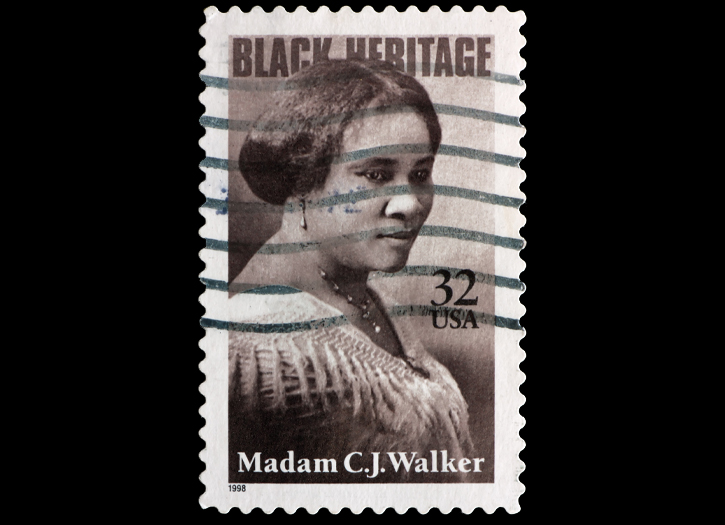We can talk about how Octavia Spencer and how her production company is pushing for more representation in the media for dark-skinned women and allowing more options in the makeup and hair chair—Octavia commenting on carrying around her makeup to set in earlier years— another time. Right now it’s all about who Octavia portrays Madam C.J. Walker in Netflix special, Self Made.
Early Life
Madam C.J. Walker is the first recorded female self-made millionaire. Born Sarah Breedlove to two slaves, she was the first person in her family to be born free.
She was orphaned at the small age of seven and worked as a domestic servant as a child. Only getting about three months of formal education at her Sunday school church, she admitted to not having many opportunities in her early years.
At just 14, Sarah was married to her first husband, Moses McWilliams. Two years later they had her only daughter, A’Lelia. After his death, she remarried John Davis but left him in about 1903.
Love for Hair
Due to poor hair products for African American women during this time, many women suffered from scalp ailments and hair loss, including Sarah.
The harsh products they were forced to use included ingredients used to wash clothes and household appliances. The environment most of these women were forced to endure also played a factor in their hair problems.
Sarah soon became a commission agent, selling Poro products made by Annie Malone—she mostly likely inspired the character in Spencer’s mini-series, Addie. While working with Malone, Sarah was learning the knowledge about proper hair care so she could develop her line.
In 1906, Sarah marketed herself as Madam C.J. Walker, following her third and final marriage, and sold her hair-care products. She and Malone found themselves in a small controversy when Malone accused Madam of stealing her formula, one that was brushed aside as Madam rose in fame.
Rising up in the World
After relocating to Indianapolis, Sarah started manufacturing her business there. She hired many female employees, something extremely unheard of during this time, and built a hair solon, factory, and a beauty school.
Walker’s sworn by method included her using a shampoo, pomade, brushing, and applying a hot comb. These steps helped rejuvenate the scalp and grow soft and healthy hair.
Walker advertised her products in African American newspapers and magazines. She also often traveled to promote her products around the world, and this no doubt had a major impact on the growth she saw through her career.
Legacy
On May 29, 1919, Madam C.J. Walker passed away from kidney failure and complications from hypertension at 51. Her manufacturing company was renamed the Madame Walker Theatre Center, and it opened in December of 1927.
In 2016, Sephora launched a collaboration with a skin and hair care brand called Sundial Brands in honor of Madam C.J. Walker. It was comprised of four collections that all included natural ingredients for different types of hair.
Self-made
In the time that I have spent researching and watching the mini-documentary on Netflix, Madam C.J. Walker has inspired me tremendously. Though I don’t want a career in hair care, I still feel like I can take on the world.
She fought for not only African American rights, but women’s rights as well. She was told to be silent on issues from African American and caucasian men, women, and told she didn’t have the face or skin color of beauty. She rose above expectations and walked so beauty creators today could run.
What has Madam C.J. Walker inspired you to do? What about her history surprised you the most? Sound off in the comments and be sure to follow me on Instagram and Twitter so you don’t miss out on future posts.







It’s great to hear about her success and her journey through tough times. Very inspiring and a step in a positive direction for the recognition of amazing and driven women like her!
Wonderfully written, thank you for shedding some insight on her journey as an African American woman. I thoroughly enjoyed your article and can’t wait to read many more. Keep up the great work!!